Archived Water Damage Blog Posts
Protecting Your Home from Water Damage: A Guide for Sandy, Utah Residents
2/18/2025 (Permalink)
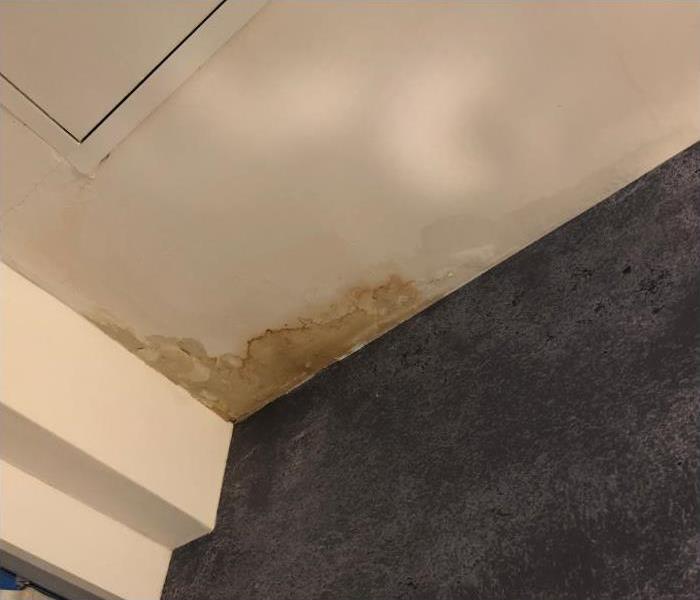 Protecting Your Home from Water Damage in Sandy, UT.
Protecting Your Home from Water Damage in Sandy, UT.
As winter transitions into spring, homeowners in Sandy, Utah, should be vigilant about the potential for water damage. The months of February and March bring a mix of snow, rain, and fluctuating temperatures, creating conditions that can lead to water-related issues in homes. Understanding these risks and implementing preventive measures can help safeguard your property.
Understanding the Weather Patterns
In February, Sandy experiences average daytime highs around 44°F and nighttime lows near 27°F. This month typically sees about 2.23 inches of precipitation, with approximately 0.60 inches falling as snow.
WEATHER FOR YOU
March brings slightly warmer temperatures, with average highs of 54°F and lows around 34°F. Precipitation increases to about 2.66 inches, with an average snowfall of 7.6 inches.
WEATHER FOR YOU
These conditions can lead to snowmelt and increased runoff, heightening the risk of water damage in homes.
Common Causes of Water Damage
Several factors contribute to water damage during these months:
- Snowmelt: As temperatures rise, accumulated snow begins to melt, increasing water runoff that can overwhelm drainage systems.
- Frozen Pipes: Cold temperatures can cause pipes to freeze and burst, leading to significant water damage.
- Roof Leaks: Accumulated snow and ice can cause roof damage, leading to leaks inside the home.
- Clogged Gutters: Debris-filled gutters can prevent proper drainage, causing water to seep into the home.
Preventive Measures
To mitigate the risk of water damage, consider the following steps:
- Inspect and Maintain Gutters: Regularly clean gutters and downspouts to ensure proper water flow. Consider installing gutter guards to prevent debris accumulation.
- Seal Entry Points: Check for and seal any gaps around windows, doors, and the foundation to prevent water infiltration.
- Insulate Pipes: Insulate exposed pipes in unheated areas to prevent freezing and potential bursts.
- Install Sump Pumps: In areas prone to flooding, a sump pump can help remove excess water from basements and crawl spaces.
- Maintain Landscaping: Ensure that the landscape slopes away from the foundation to direct water flow away from the home.
- Check Roofs and Attics: Inspect roofs for damage and ensure attics are properly ventilated to prevent ice dams.
- Monitor Weather Conditions: Stay informed about local weather forecasts to anticipate and prepare for potential storms or rapid snowmelt.
What to Do If Water Damage Occurs
Despite best efforts, water damage can still occur. If you experience water intrusion:
- Ensure Safety: Turn off electricity to affected areas to prevent electrical hazards.
- Stop the Source: If possible, identify and stop the source of water, such as turning off the main water supply.
- Document the Damage: Take photographs of the affected areas for insurance purposes.
- Contact Professionals: Reach out to a water damage restoration company like SERVPRO® of Sandy for immediate assistance.
- SERVPRO of Sandy: Your Partner in Water Damage Restoration
SERVPRO of Sandy specializes in water damage restoration, offering comprehensive services to restore your home to its pre-damage condition. Their process includes:
- Inspection and Assessment: Thorough evaluation of the damage to develop an effective restoration plan.
- Water Removal: Utilizing advanced equipment to extract standing water promptly.
- Drying and Dehumidification: Employing industrial-grade dehumidifiers and air movers to remove residual moisture.
- Cleaning and Sanitizing: Cleaning and sanitizing affected areas to prevent mold growth and odors.
- Restoration: Repairing and restoring damaged structures and belongings.
Their team is available 24/7 to respond to emergencies, ensuring a swift and efficient restoration process.
COMMERCIAL AND RESIDENTIAL RESTAURANTS
The months of February and March present unique challenges for homeowners in Sandy, Utah, due to the combination of snow, rain, and fluctuating temperatures. By proactively implementing preventive measures and understanding the risks, you can protect your home from potential water damage. In the event of water intrusion, partnering with professionals like SERVPRO of Sandy ensures a thorough and efficient restoration process, allowing you to return to normalcy with confidence.
Fall Home Maintenance Tips for Sandy, UT: Preparing Your Home for Winter
10/22/2024 (Permalink)
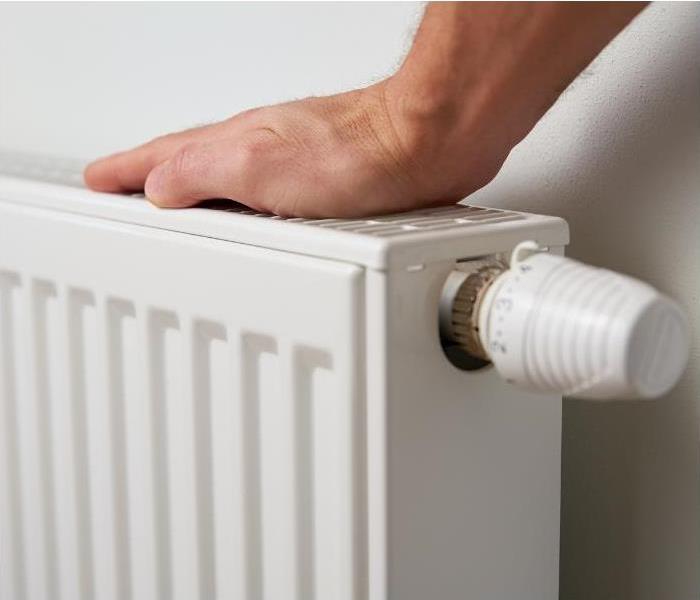 Fall Home Maintenance in Sandy, UT
Fall Home Maintenance in Sandy, UT
As the leaves begin to change color and the air turns crisp in Sandy, Utah, it's a clear sign that autumn is here. With winter just around the corner, now is the perfect time to focus on fall home maintenance. Proper upkeep not only ensures your home remains a warm haven during the chilly months but also prevents potential issues that could arise from neglecting essential tasks. Here are some comprehensive fall home maintenance tips to help you prepare your home for winter.
1. Inspect Your Roof and Gutters
Why It’s Important
Your roof is your home’s first line of defense against the elements, especially during harsh winter weather. Ice, snow, and freezing temperatures can exacerbate existing issues, leading to leaks and costly repairs.
What to Do
Visual Inspection: Look for missing, cracked, or curled shingles. If you're comfortable, use binoculars to check from the ground; otherwise, hire a professional.
Clean Gutters: Remove leaves and debris from gutters to ensure proper drainage. Clogged gutters can cause water to back up and freeze, leading to roof damage and ice dams.
Check Downspouts: Make sure downspouts direct water away from your home’s foundation to prevent flooding.
2. Prepare Your Heating System
Why It’s Important
A reliable heating system is essential for comfort during the cold months. Regular maintenance can help prevent unexpected breakdowns when you need your furnace the most.
What to Do
Change Filters: Replace your air filters to improve air quality and ensure efficient airflow. Clogged filters can strain your heating system and raise energy costs.
Schedule a Professional Inspection: Consider hiring a technician for a thorough inspection and cleaning of your heating system. They can identify potential issues and ensure your system is safe and efficient.
3. Seal Windows and Doors
Why It’s Important
Drafts from windows and doors can lead to significant heat loss, resulting in higher energy bills and an uncomfortable living environment.
What to Do
Check for Gaps: Inspect the edges of windows and doors for cracks or gaps.
Apply Caulk and Weather Stripping: Use caulk to fill in any gaps and apply weather stripping around doors to create a tighter seal. This simple action can dramatically improve your home’s energy efficiency.
4. Prepare Your Landscaping
Why It’s Important
Proper fall landscaping not only keeps your yard looking neat but also protects your plants from harsh winter conditions.
What to Do
Rake Leaves: Regularly remove fallen leaves to prevent mold growth and smothering your lawn. Consider composting leaves to create nutrient-rich soil for spring.
Trim Plants and Shrubs: Cut back any dead or overgrown plants to promote healthy growth in the spring. Pruning now can prevent damage from heavy snow.
Mulch: Apply mulch around your plants to insulate their roots and retain moisture throughout the winter.
5. Inspect and Store Outdoor Equipment
Why It’s Important
Taking care of your outdoor equipment can extend its life and ensure it’s ready for use in the spring.
What to Do
Lawn Equipment: Drain fuel from lawn mowers, trimmers, and other gas-powered equipment. Store them in a dry, protected area.
Hoses: Disconnect and drain garden hoses to prevent freezing. Store them in a shed or garage.
Patio Furniture: Consider covering or storing outdoor furniture to protect it from the elements and prolong its lifespan.
6. Check Your Smoke and Carbon Monoxide Detectors
Why It’s Important
With heating systems running more frequently during winter, it’s crucial to ensure that your smoke and carbon monoxide detectors are in good working condition to protect your family from potential hazards.
What to Do
Test Your Detectors: Press the test button on each unit to ensure it’s functioning.
Change Batteries: Replace batteries in each detector. Consider doing this twice a year—once in the spring and once in the fall—to keep them operational.
Replace Old Units: If your detectors are over ten years old, consider replacing them for the latest safety technology.
7. Review Emergency Preparedness Plans
Why It’s Important
Sandy experiences winter weather that can sometimes lead to power outages and emergencies. Being prepared can save you time and stress during unexpected situations.
What to Do
Emergency Kit: Ensure you have a well-stocked emergency kit with essentials like flashlights, batteries, bottled water, and non-perishable food items.
Plan for Power Outages: If you rely on electricity for heating, consider purchasing a generator or making arrangements with neighbors for assistance in case of outages.
8. Clean and Maintain Your Fireplace
Why It’s Important
A fireplace can be a comforting source of heat during winter, but improper maintenance can lead to dangerous situations.
What to Do
Chimney Inspection: If you have a wood-burning fireplace, have your chimney inspected and cleaned by a professional to remove creosote buildup.
Check for Blockages: Ensure the flue is clear and functional before using your fireplace for the first time this season.
Store Firewood Safely: Keep firewood stored in a dry place, ideally outside and off the ground to prevent moisture absorption.
9. Prepare for Winter Recreation
Why It’s Important
Sandy offers plenty of opportunities for outdoor winter activities, from skiing to snowshoeing. Being prepared can enhance your enjoyment of these experiences.
What to Do
Service Outdoor Gear: Check your skiing or snowboarding gear for any needed repairs or servicing.
Stock Up on Supplies: Ensure you have winter gear such as snow shovels, salt for ice, and appropriate winter clothing ready for use.
As fall unfolds in Sandy, UT, taking these maintenance steps can make a significant difference in how your home withstands the winter months. By investing a bit of time and effort now, you can enhance your home’s efficiency, safety, and comfort for you and your family.
Remember, if you’re not comfortable performing any of these tasks or need assistance, it’s always a good idea to consult local professionals who can help ensure your home is ready for whatever winter has in store. With a well-prepared home, you can fully enjoy the beauty and tranquility of the season.
7 Tips to Reduce Flooding Risks in Sandy, UT
5/17/2024 (Permalink)
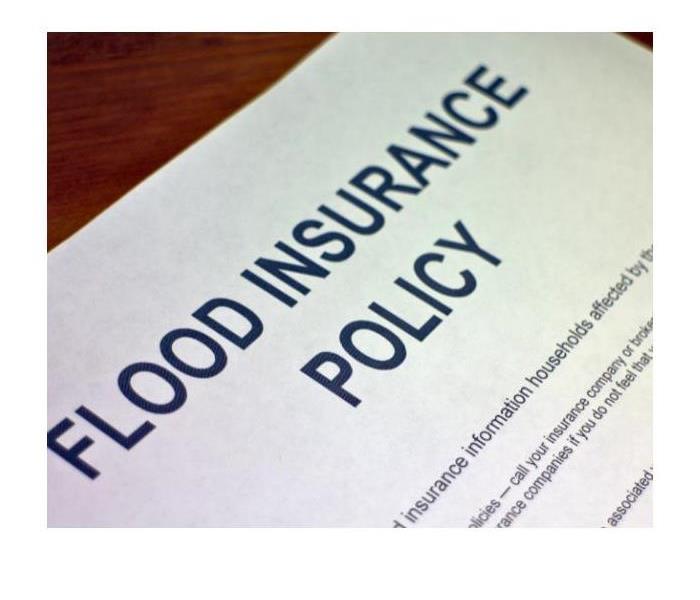 Mitigating Flood Risks in Sandy, UT
Mitigating Flood Risks in Sandy, UT
Sandy, Utah, nestled at the base of the picturesque Wasatch Mountains, is a vibrant community that offers its residents a high quality of life. However, like many areas, Sandy is not immune to the threats posed by flooding. With its proximity to the Jordan River and the potential for heavy rainfall and snowmelt, flooding can pose significant risks to both property and lives in this area. Fortunately, there are proactive steps residents can take to mitigate these risks and protect their homes and families. In this blog, we'll explore seven tips to reduce flooding risks in Sandy, UT.
1. Stay Informed: Knowledge is Power
One of the most crucial steps in preparing for flooding is to stay informed about potential risks and warning signs. Sandy residents should familiarize themselves with the local floodplain maps, which identify areas prone to flooding. Additionally, signing up for emergency alerts and notifications from the city or county can provide early warnings of impending flood events. By staying informed, residents can take proactive measures to protect themselves and their property.
2. Invest in Flood Insurance
Many homeowners mistakenly believe that their standard homeowner's insurance policy will cover flood damage. However, most policies do not include flood coverage, leaving homeowners vulnerable to significant financial losses in the event of a flood. To protect against this risk, residents in flood-prone areas like Sandy should consider purchasing flood insurance through the National Flood Insurance Program (NFIP). While it may require an additional investment, the peace of mind and financial protection it offers are invaluable.
3. Maintain Proper Drainage
Effective drainage is key to preventing flooding, so it's essential for homeowners to keep their drainage systems well-maintained. This includes regularly cleaning gutters and downspouts to ensure they are free of debris, as clogged gutters can cause water to overflow and pool around the foundation of a home. Additionally, homeowners should inspect their property for any signs of poor drainage, such as standing water or erosion, and take steps to address these issues promptly. Proper grading and the installation of French drains or other drainage solutions can help redirect water away from vulnerable areas.
4. Install Sump Pumps
For homes with basements or crawl spaces, installing a sump pump can be an effective way to mitigate flood risks. Sump pumps are designed to remove excess water that accumulates in these areas, helping to prevent water damage and mold growth. It's essential to regularly test and maintain sump pumps to ensure they are functioning correctly when needed most. Additionally, homeowners may want to consider installing a backup sump pump or a generator to provide power in the event of an outage during a flood.
5. Elevate Utilities and Appliances
Flooding can wreak havoc on electrical systems, heating and cooling equipment, and other appliances located in basements or low-lying areas. To minimize damage, homeowners should elevate these utilities and appliances above the potential flood level. This may involve relocating electrical panels, HVAC systems, water heaters, and other essential equipment to higher floors or installing them on raised platforms. Taking these precautions can help prevent costly damage and ensure that essential services remain operational during and after a flood.
6. Waterproof Your Home
Waterproofing measures can provide an additional layer of protection against flooding and water intrusion. This may include sealing cracks in the foundation, applying waterproof coatings to basement walls, and installing a perimeter drainage system or interior waterproofing membrane. Homeowners should also consider investing in flood-resistant building materials, such as flood barriers for doors and windows, to prevent water from entering their homes. While these measures may require an upfront investment, they can ultimately save homeowners thousands of dollars in repair costs.
7. Practice Emergency Preparedness
Despite our best efforts to prevent flooding, emergencies can still occur. That's why it's essential for Sandy residents to have an emergency preparedness plan in place. This plan should include evacuation routes, emergency contacts, and a stocked emergency kit with essentials such as water, non-perishable food, first aid supplies, and flashlights. Additionally, families should discuss and practice their plan regularly, so everyone knows what to do in the event of a flood or other disaster.
Flooding poses a significant risk to homeowners in Sandy, UT, but by taking proactive measures, residents can reduce their vulnerability and protect their homes and families. From staying informed and investing in flood insurance to maintaining proper drainage and practicing emergency preparedness, there are many steps homeowners can take to mitigate flooding risks. By implementing these tips, Sandy residents can navigate nature's fury with confidence and resilience.
Swift Solutions to Water Damage: SERVPRO of Sandy to the Rescue
1/13/2024 (Permalink)
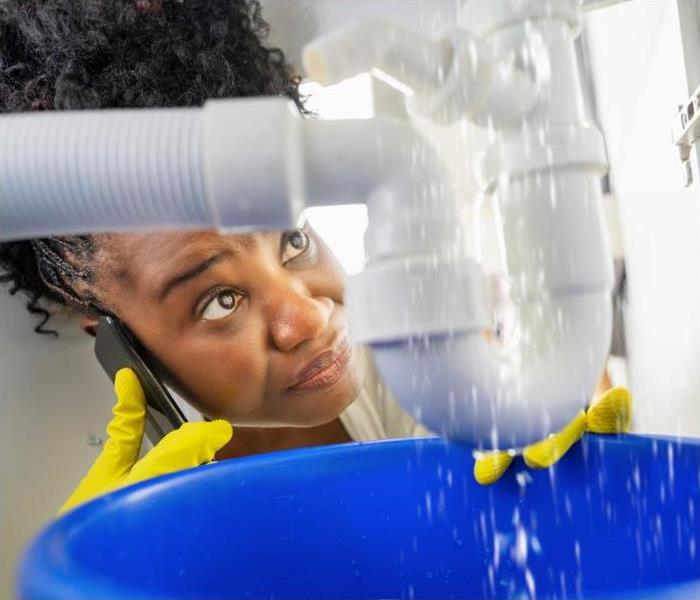 Leaking pipe in Sandy, Salt Lake City, Utah.
Leaking pipe in Sandy, Salt Lake City, Utah.
Water damage can strike at any moment, catching homeowners off guard and wreaking havoc on their property. One of the most common causes of water damage is a leaking pipe. Whether it's a slow and persistent drip or a sudden burst, the consequences can be devastating. However, acting swiftly is crucial to mitigating the damage and preventing long-term issues. In such situations, SERVPRO of Sandy emerges as a beacon of hope, providing immediate and effective solutions to address water damage caused by leaking pipes.
1. Understanding the Scope of Water Damage:
Before delving into the role of SERVPRO of Sandy, it's essential to comprehend the potential consequences of water damage stemming from a leaking pipe. Aside from obvious property damage, water intrusion can lead to mold growth, compromised structural integrity, and health hazards. It's a race against time to mitigate these risks, emphasizing the need for prompt action.
2. Immediate Response: The SERVPRO Advantage
SERVPRO of Sandy specializes in professional water damage restoration, offering a swift and comprehensive response to mitigate the effects of water damage. Their team of highly trained technicians understands the urgency of the situation and is equipped with the latest tools and technology to address the issue promptly.
3. Emergency Water Extraction:
The first step in the mitigation process is the extraction of standing water. SERVPRO of Sandy employs advanced water extraction equipment to swiftly remove water from the affected areas. This not only prevents further damage but also expedites the drying process.
4. Thorough Drying:
Once standing water is removed, the focus shifts to thorough drying of the affected spaces. SERVPRO utilizes industrial-strength dehumidifiers and high-powered air movers to eliminate moisture from walls, floors, and other surfaces. This prevents the onset of mold and mildew, safeguarding the indoor air quality.
5. Professional Assessment:
A crucial aspect of SERVPRO's service is a professional assessment of the extent of water damage. This assessment guides the restoration process, ensuring that no hidden pockets of moisture are left untreated. Their experts use moisture meters and thermal imaging technology to identify areas that may require special attention.
6. Mold Remediation:
Given enough time and moisture, mold can quickly become a secondary concern. SERVPRO of Sandy is well-versed in mold remediation techniques, addressing any mold growth resulting from the water damage. Timely intervention in this regard can prevent more significant issues down the line.
7. Structural Restoration:
In cases of severe water damage, structural components of a property may be compromised. SERVPRO of Sandy has the expertise and resources to handle structural restoration, ensuring that the property is returned to its pre-damage condition.
8. Content Restoration:
Water damage doesn't only affect the structure but also the contents within. SERVPRO employs specialized techniques for content restoration, salvaging belongings that may have otherwise been deemed unsalvageable.
9. Customer-Centric Approach:
SERVPRO of Sandy takes a customer-centric approach to water damage restoration. They understand the stress and disruption such events can cause, and their team is committed to providing compassionate and efficient service. Their communication is transparent, keeping homeowners informed at every step of the restoration process.
10. 24/7 Availability:
Water damage doesn't adhere to a schedule, and neither does SERVPRO of Sandy. Their emergency response team is available 24/7, ready to spring into action whenever disaster strikes. This prompt response can make all the difference in minimizing damage.
11. Insurance Coordination:
Navigating insurance claims can be a daunting task, especially in the aftermath of a crisis. SERVPRO of Sandy assists homeowners in the claims process, working with insurance companies to ensure a smooth and efficient resolution.
12. Preventive Guidance:
Beyond the immediate restoration, SERVPRO of Sandy offers preventive guidance to homeowners. This includes recommendations on how to safeguard against future water damage, whether through routine maintenance or the installation of protective measures.
Dealing with water damage resulting from a leaking pipe requires immediate and professional intervention. SERVPRO of Sandy stands out as a reliable partner in these challenging times, offering a swift and comprehensive response to mitigate the effects of water damage. Their expert team, advanced technology, and customer-centric approach make them a beacon of hope for homeowners facing the unexpected aftermath of a leaking pipe. When water damage strikes, SERVPRO of Sandy is the trusted ally to restore homes and peace of mind.
What To Do When Your Toilet Leaks With Every Flush
8/18/2023 (Permalink)
 Toilet leak can lead to several water damage in Sandy, UT.
Toilet leak can lead to several water damage in Sandy, UT.
Toilets are pretty hardy units. Those porcelain commodes remain sturdy and durable, usually lasting for decades after installation. However, like anything in the home, it can break down. When homeowners in Sandy, UT, observe a leaking toilet, they should take action.
A leak is a time to assess and react quickly. Small leaks can lead to significant problems such as water damage and mold. Therefore, owners shouldn't wait and see or put it off for another day. The following are tips for handling this situation.
- Understand the Common Causes of a Leaking Toilet
What is essentially wrong? Focus on this question as you begin your leak hunt. Water could escape from the toilet for many reasons; thus, learn the intricacies of the device and its various parts. For instance, any of the following situations could explain the mishap:
- Someone improperly installed it.
- The bowl or tank has a crack.
- The bolts are loose.
- The wax ring broke or dissolved.
- The base is weakly sealed.
- The wax ring is busted or old.
- Create a Plan To Locate the Main Issue
Find the bathroom leak by running some tests. Start with observation. When you flush, do you visually see when the drips or leaks happen? Where is the release? How much is coming out? For instance, you may observe water around the base with a weak wax ring or a bad flange. Check out those parts before moving to something else.
If that isn't the answer, tighten the bolts to see if the base needs more security. A wobbly seat may lead you to this option. Furthermore, drips may happen from the lines or minor breaks in the porcelain. Drop color-safe dissolvable tablets into the tank. Flush and keep your eyes open for color outside of the unit.
- Assess for Additional Water Damage
If water drips into the floor, walls or ceiling, the material soaks it up. This situation proves problematic for several reasons. When the fluid sits for long periods, it could harm the structure's integrity, beginning to weaken and rot. In addition, mold spores thrive on dampness. They exist everywhere and migrate through the air and the movement. If present, they reproduce in moist, organic substances. Thus, owners could find fungus growth with long-term leaks.
Call a professional water remediation team to assess the bathroom and surrounding area. These porous items permit dampness to go deep inside, reaching microscopic levels that dehumidifiers and bleach cannot reach. These experts evaluate the conditions and can create a plan to clean and restore the room. They may not fix the toilet, but they can attend to the secondary damage.
- Determine a Strategy to Resolve the Problem
Be sure to fix the origin of the water source. Once you know how it occurred, work with plumbers to correct the trouble. Buy new parts and ensure that specialists install them to avoid future issues.
When you push the handle down, water shouldn't come out. If you observe puddles or drips, then examine the unit for concerns. Determine the cause of your leaking toilet and repair the source of trouble.
Does Your Toilet Overflow When You Run the Shower? Clean the Mess With These Sewage Cleaning Tips
6/17/2022 (Permalink)
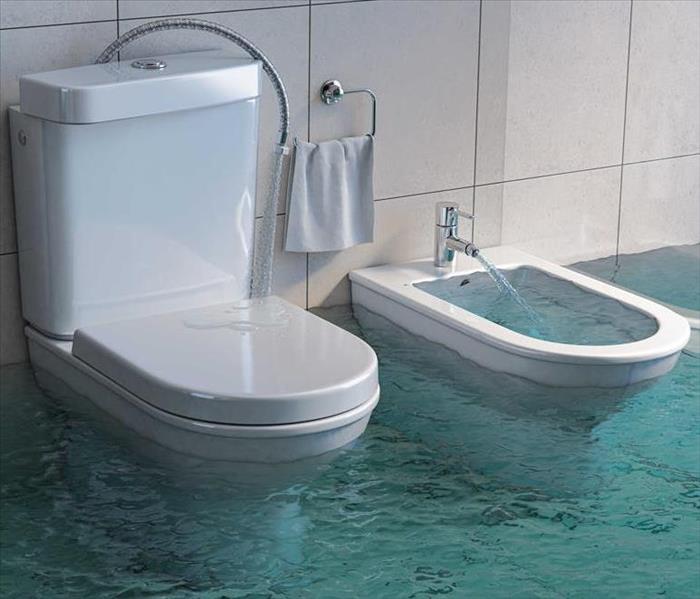 Have a better Water Cleaning Experience following Our Tips.
Have a better Water Cleaning Experience following Our Tips.
When sewage lines become clogged, the obstruction prevents the fluid from moving through the pipes. It builds up, escaping from the nearest outlet. Sinks and toilets offer the most viable openings, so when you step into the shower and the plumbing is blocked, the water is likely to pour out of the toilet, leaving owners to handle sewage cleaning.
How To Manage Toilet Overflows and Sewage Cleaning
As a homeowner in Sandy, UT,, you need to protect your house and seek professional help for clean-up procedures. With a few tools and expert assistance, your shower and toilet can function correctly again. The following are three essential tips to follow.
1. Locate the Clog Causing the Toilet Overflow
Turn off the water to the immediate area. You don't want another overflow to occur while hunting down the source. Then, move from one location to another to find the blockage. The following are possible zones of trouble. Check each one to ensure that you catch any concerns.
- Drain Cleanout
- Outside sewage pipes
- Commode
Plungers work well for smaller obstacles. However, this clog is likely larger and further down the plumbing. For more efficiency, control and force, use a snake. Begin with the toilet. The snake is a long flexible tube that can enter the lines. It has a crank that creates pressure to push the clog through. You can move through the various home openings, testing for concerns.
If you can't find the issue, move to the drain cleanout. It's usually located outside. Wear gloves and use the torque to remove the lid. You're entering the main sewer line, filled with microorganisms and waste. If you're reached this point, it's best to call in a water restoration company in Sandy, UT, to assess the trouble.
2. Tackle Outside Troubles
After a while, older pipes corrode, weakening your structure. Also, tree roots can grow into lines, leaving cracks and holes. These permit sand and dirt to collect, blocking movement. The specialists have high-quality video scopes to scrutinize the plumbing. They can clean the drain out and identify external concerns. In addition, they begin necessary repairs.
3. Start Sanitizing and Sewage Cleaning Procedures
Sewer water is a class 3 fluid, also called black water. It's not something you want to stick around in your home because it hosts bacteria and mold. The longer it lingers, the more contamination you face. Spores such as mold, for instance, migrate into your porous materials like drywall and flooring. Mixed with the water, they reproduce quickly, infesting places within one to two days. Therefore, immediately work with the remediation team to initiate clean-up procedures once you've located the blockage.
Have the team assess the clogged pipe aftermath, collect samples and take moisture readings. Attack the fluid. Dry out the impacted spaces using industrial dehumidifiers and air scrubbers. Discard porous, overly saturated materials.
Deodorize and treat the bathroom with antimicrobial cleaners. Then, rebuild and replace the space, returning it to proper working order.
Running your shower can trigger the toilet to overflow if you have a clog. Shut off the water and find the source. A team of water experts can assist in your trouble and begin critical sewage cleaning. Don't wait. It's imperative to improve fluid movement and sanitize the space.
4 Ways To Avoid Water Damage During a Vacation
3/24/2022 (Permalink)
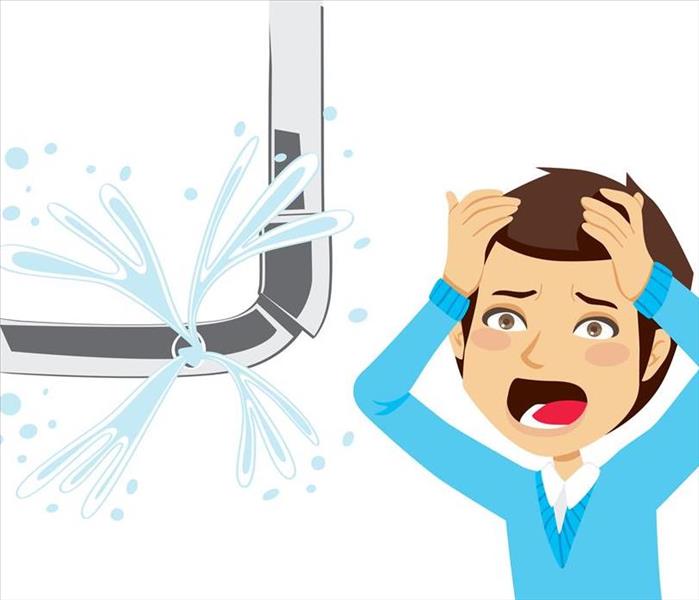 When you return from Vacation, give your Home a good check-up by following these tips.
When you return from Vacation, give your Home a good check-up by following these tips.
After returning home from vacation, the sight of flood rooms or landscaping is never a welcome sight. Unfortunately, there are many potential causes of flooding, such as a damaged appliance, frozen pipes, or a leak in the roof. Heavy storms in the winter or summer could cause flooding in the basement or a faucet that was left on could lead to water damage.
If you want to avoid the expensive damage caused by water, you need to think beyond water pipe repair.
Avoid Water Damage by Checking Your Home
1. Thoroughly Check Pipes, Appliances, and Your Home
Begin your inspections several weeks before your vacation. You may need to flush the water heater, replace an appliance, or schedule water pipe repair, and this could take some time to complete. Watch out for hoses that appear damaged, seals that are worn, signs of rust, cracks, and clogged gutters and downspouts.
2. Turn Off Water to Your Home
Shutting off the water at the main is one of the best ways to avoid water damage from a broken pipe when you're on vacation. If you don't want to turn off all the water, shut it off behind toilets and appliances, as well as underneath sinks. Once you've turned off the water, open the faucets to drain any remaining water from the pipes.
3. Turn Off the Water Heater
The water heater in your home contains a lot of water. Some newer heaters have a vacation mode that provides some protection. However, if you plan to be gone for a long time, it's best to completely turn the water heater off, so you can avoid a flooded basement when you return.
4. Ask a Neighbor To Check In
There are several benefits to having a friend check your home while you're gone, such as picking up newspapers, mail, and packages. They can care for pets and make sure your home looks as if you were still at home.
Returning home to leaking pipes or having to face water pipe repair as well as flood damage may be one of the worst ways to end a vacation. Sandy, UT, water damage repair and reconstruction professionals may have other valuable tips.
Understanding Insurance Coverage When Your Basement Floods
2/17/2022 (Permalink)
 It is helpful to understand your homeowner's policy.
It is helpful to understand your homeowner's policy.
A basement flood can happen for a variety of reasons. An active storm season, a busted or frozen pipe, leaking appliances and invasive groundwater can all affect the lowest level of your home in Sandy, UT. When this happens, one of your first calls is likely to be your insurance provider, and it helps to know exactly what your homeowner's policy covers.
2 Things You Should Know About Insurance Coverage
1. Insurance Limits
Even if you have great property coverage, some things will still be out-of-pocket expenses. There are several types of damage that aren't typically covered by the standard homeowner's policy:
- Neglect - Rotting floorboards or drywall damage that happens due to an ongoing issue that you have failed to address in a timely manner is unlikely to be covered by your insurance. This is one of the reasons it's important to call water damage mitigation experts as soon as you notice a problem.
- Plumbing - While your insurance coverage on your home pays for repairs to the structure itself, it doesn't usually cover repair or replacement of the leaky plumbing components that cause the damage.
- Appliances - Likewise, your insurance policy doesn't pay to repair or replace broken appliances, which can also cause a flooded basement.
- Storm Flooding - The typical homeowner's insurance plan doesn't pay for damage repair after a storm. It is wise to get a separate flood policy to protect your home, particularly if you live in a flood plain or have a basement.
- Sewer Backup - A clog or break in the sewer line that leads to your home may result in a backup through a shower, bathtub, toilet or sink. Your property coverage may not pay for the subsequent damage, so a separate water backup policy is a good idea, particularly if you live in an older home or in an established neighborhood with a lot of trees.
2. Standard Coverage
If your basement flood is the result of a sudden, accidental incident, your homeowner's policy likely covers the mitigation of the water damage it leaves behind. This includes removal of damaged materials, water extraction, drying, disinfecting and restoration. Depending on how extensive your policy is, it may also pay for the recovery of some of your personal items, such as electronics or important documents.
While many policies share the same basic components, the only way to be sure of the terms of your specific coverage is to review the documents that outline its boundaries. Talk to your insurance agent if you need clarification. It is also a good idea to ask what risks you are taking that aren't covered by anything in your plan.
No matter how many preventative measures you take, a basement flood can still happen in your home. Knowing all the things that could cause it helps you decide what kind of coverage you need beyond the basic homeowner's package. Most of the structural damage may be covered by your plan, but you may have to pay for other repairs out of pocket. A thorough understanding of your homeowner's policy is helpful in deciding how much you need to save for a rainy day.




 24/7 Emergency Service
24/7 Emergency Service







